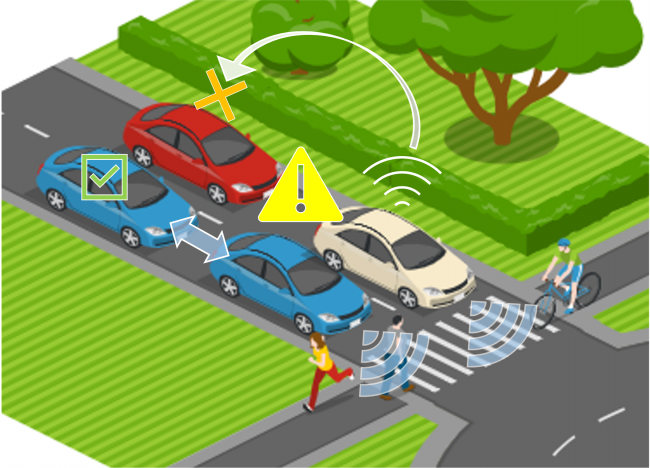HUMAN FACTORS, RISKS AND OPTIMAL PERFORMANCE IN CCAM
The purpose for the project is to further progress in Cooperative, Connected, and Automated Mobility (CCAM) technologies deploying and thus addressing Vision Zero mission. While it is expected that CAVs become pervasive, multimodal road users (MRUs), such as pedestrians, bicycles, non-connected legacy cars might obstruct the convergence towards an optimal performance.
This brings us to the following questions:
- How can road risks be assessed in Day 4 scenarios where CAVs are dominating but still coexisting with non-connected, non-cooperative MRUs?
- Are existing risk models valid for future mobility?
- What are the parameters that affect the accuracy of risk assessment methods?
- What are the optimal requirements for information, network performance and data processing to respond efficiently to the presence of MRUs?
- How do different types and levels of communication affect performance safety and efficiency?
- What are the optimal requirements (e.g., data, technology, infrastructure) to respond efficiently to MRU factors in hybrid scenarios.
In this pre-study, we have two main goals that systematize the search for answers to these questions:
- Goal 1 (risk metrics): to identify scenarios requiring enhanced risk metrics. It includes:
- providing risk map for hybrid road scenarios (CAV+MRU)
- identifying parameters that divide scenarios into groups
- matching risk assessment methods/models available
- Goal 2 (CAV performance): to define optimal response requirements. It includes:
- investigation of the effect of different levels of CCAM (e.g., local awareness, collective perception, statistics, intention sharing) on road safety and traffic efficiency for the Day 4 scenarios
- proposing optimal network and data requirements based on the previous point.
Implementation and design
- Survey: development of a comprehensive map of hybrid road scenarios:
- Exploration of existing risk metrics/models used in the insurance domain (in collaboration with insurance companies).
- Analysis of their applicability to Day 4 scenarios.
- Identification of situations that require more granulated risk assessment.
- Proof of concept: simulations:
- Exploration of trends in the evolution in automation and communication in the industry (in collaboration with OEMs and vehicle manufacturers).
- Analysis of performance for individual CAVs with different levels of cooperation abilities and various data processing strategies.
- Assessment of system performance affected by different ratios of co-existence between heterogeneous CAVs and MRUs.
The main result will be presented as a report containing:
- A comprehensive map of Day 4 hybrid scenarios
- Analysis of risk models sufficiency and possible adjustments.
- Requirements for optimal performance of single CAVs.
- Requirements for optimal performance of the traffic flow.
Expected outcomes would put the spotlight on potential challenges related to Multimodal Road Users and their influence the CCAM ecosystem and provide the groundwork for future collaborations with the industry, aiming at larger project applications within the scope of SAFER’s long-term vision.

